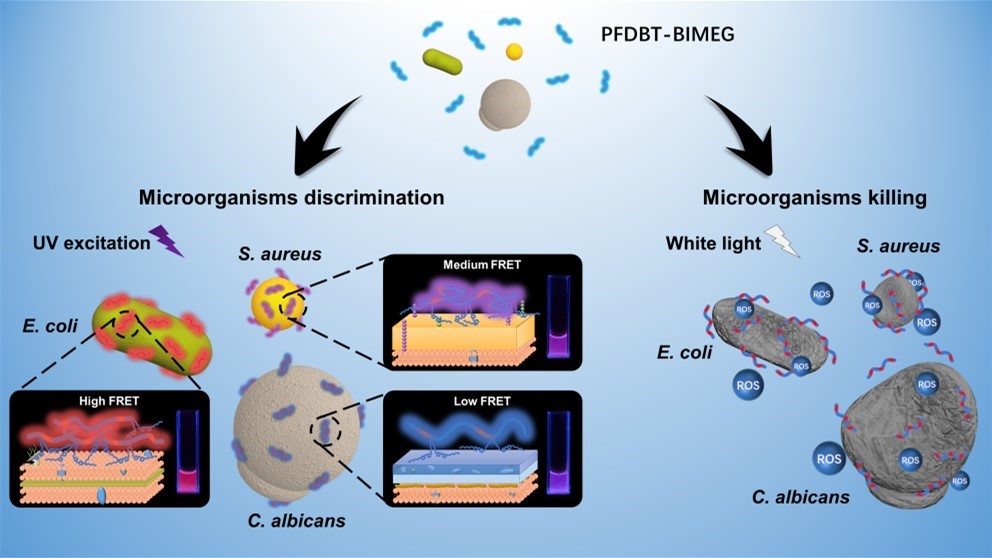8 Polymer Display and Energy Materials Research Group Achieves Research Progress in New Advanced Functional Materials
The polymer display and energy materials of the SMSE has long studied new advanced functional materials, and achieved a series of outcomes. Recently, the group worked with researchers from Harvard University in the US to make new important progress in the design and preparation of a new advanced functional material and its application in the field of biomedicine. The relevant research achievement has been published on NANO LETTERS (IF 12.712), a prestigious international academic periodical.
In the biomedical system, using biodegradable multifunctional hydrogel in the drug combination therapy system with high efficiency and low side effect is the key to the effective treatment of cancer and advanced biomedical applications. Drug combination therapy system has synergistic effect, which can effectively reduce drug resistance and drug dosage. Therefore, the preparation of novel biocompatible nano-functional materials and their applications in biomedicine have always been a research hotspot in the field of life science. At the same time, the research and development of multifunctional nano-hydrogel materials loaded with anticancer drugs or antibodies and having photothermal properties is of important theoretical and practical significance.

Schematics of gold nanorods conjugated porous silicon nanoparticles encapsulated in calcium alginate nano hydrogels
To solve these key problems, the group designed and prepared gold nanorods conjugated porous silicon nanoparticles with photothermal property and loaded with hydrophobic anticancer drugs, and encapsulated it in calcium alginate nano hydrogels through microemulsion templates for the loading of molecular target drugs, chemical drugs or antibodies. At the same time, it was successfully used in the biomedical and chemical application of anticancer drug combination system. Gold nanorods conjugated porous silicon nanoparticles have excellent photothermal property, and can increase the loading efficiency of hydrophobic anticancer drugs. The gold nanorods conjugated porous silicon nanoparticles encapsulated in calcium alginate nano hydrogels can effectively control the release of drugs. The combination of different anticancer drug systems coloaded in the new functional material can effectively inhibit drug resistance. With excellent biocompatibility and photothermal effect, the functional material represents an ideal system for drug loading and material delivery, as it can promote more effective cancer cell death through synergism of drugs and targeting effect of drugs and synergism between drugs and antibodies. This study has drawn wide attention and recognition among peers at home and abroad. The findings have been published on Nano Letters (IF 12.712) (2018, 18, 1448-1453), a prestigious academic periodical of the American Chemical Society.
Gold Nanorods Conjugated Porous Silicon Nanoparticles Encapsulated in Calcium Alginate Nano Hydrogels Using Microemulsion Templates
Hongbo Zhang†‡∥&▽, Yueqi Zhu§▽, Liangliang Qu†‡▽, Huayin Wu‡▽, Haixin Kong▽†○, Zhou Yang† , Dong Chen‡◆ , Ermei Mäkilä⊥, Jarno Salonen⊥ , Hélder A. Santos# , Mingtan Hai*†‡, and David A. Weitz*‡
† Beijing Key Laboratory of Function Materials for Molecule & Structure Construction, School of Materials Science and Engineering, University of Science and Technology Beijing, Beijing 100083, People’s Republic of China
‡ Harvard John A. Paulson School of Engineering and Applied Sciences, Harvard University, Cambridge, Massachusetts 02138, United States
§ Department of Interventional Radiology, The Sixth Affiliated Hospital of Shanghai Jiaotong University, Shanghai 200233, People’s Republic of China
∥ Pharmaceutical Sciences Laboratory, Åbo Akademi University, 20520 Turku, Finland
& Turku Center for Biotechnology, University of Turku and Åbo Akademi University, 20520 Turku, Finland
⊥ Laboratory of Industrial Physics, University of Turku, Turku FI-20014, Finland
# Division of Pharmaceutical Chemistry and Technology, Helsinki Institute of Life Science, HiLIFE, University of Helsinki, FI-00014 Helsinki, Finland
Nano Lett., 2018, 18 (2), pp 1448–1453
DOI: 10.1021/acs.nanolett.7b05210
Publication Date (Web): January 31, 2018
Copyright © 2018 American Chemical Society
*E-mail: mingtanhai@mater.ustb.edu.cn; mhai@seas.harvard.edu (M.H.)., *E-mail: weitz@seas.harvard.edu (D.W.)


